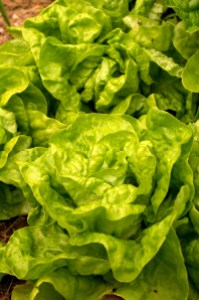Tennis Ball Heirloom Lettuce

Tennis Ball Lettuce was found in the United States as early as the eighteenth century. It was a favorite of Thomas Jefferson. He grew it in the famed garden at Monticello beginning in 1809. When describing Tennis Ball, he wrote, “it does not require so much care and attention” as other varieties of lettuce.
Tennis Ball Lettuce is a Butterhead variety of lettuce. It is considered to be the origin of today’s Boston lettuces. Heads of Tennis Ball Lettuce grow in tightly formed rosettes. The leaves are light green in color and have a soft, smooth texture.
Lettuces can be succession planted to be enjoyed throughout the growing season. They prefer the cooler conditions of spring and fall to summer’s heat. When sowing in the summer, consider planting lettuce in the shade of larger, established plants. They can be grown as companions with dill, mint, chives, beets, cucumber, and beans. Lettuce is one of the few vegetables that can be grown successf ully with dill.
ully with dill.
In Thomas Jefferson’s day, the leaves of Tennis Ball Lettuce were preserved by pickling them in a salt brine solution. Doing so allowed the leaves to be stored and enjoyed during the long winter when fresh greens were unavailable. The leaves were then served as an accompaniment to the main course during a meal.
We plant Tennis Ball Lettuce in our garden every year. While I have never found the need to pickle these tender greens, I am fascinated by the idea. Instead, we enjoy them dressed lightly and served as a main course or side dish. They pair wonderfully with roasted potatoes.
Tennis Ball Lettuce is listed on Slow Food USA’s Ark of Taste. The Ark of Taste lists 200 foods that are in danger of becoming extinct. Here’s hoping that we’ll all be able to enjoy delicious Tennis Ball Lettuce from our gardens for many generations to come.